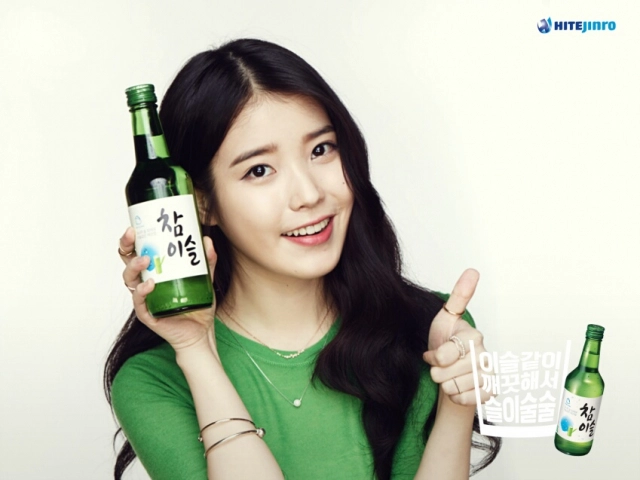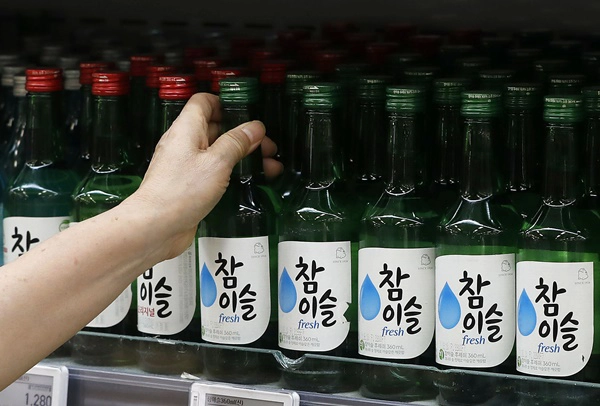Soju Chamisul Fresh has been refined with a reduced alcohol content of 0.5 degrees, reaching a new level of 16 degrees. Leading the way with a substantial 50% market share in the soju industry, Chamisul has set a trend for other brands to follow suit. This shift indicates a broader trend in the industry, where the alcohol content of soju, a quintessential spirit in Korean culture, is expected to become even smoother with a 0.5-degree reduction.”
On the 13th, HiteJinro revealed its plans to reduce the alcohol content of Chamisul Fresh from 16.5 degrees to 16 degrees and undergo a comprehensive brand revitalization. The revamped product is set to hit the shelves starting from the 14th.
Since its introduction in 1998, Chamisul has achieved remarkable sales, totaling around 39 billion bottles (based on a 360ml standard). To illustrate the scale of this achievement, the company highlights that if these bottles were lined up, they could encircle the Earth (with a circumference of 46,500 km) approximately 200 times, given the rate of about 15 bottles sold every second. This statistic alone attests to the profound love Koreans have for soju.

The alcohol content of soju
The transformation in soju’s alcohol content has been quite remarkable. In the 1920s, during its initial introduction, soju was distilled, boasting a potency of 35 degrees. By 1965, the market shifted towards more affordable, diluted soju, maintaining a robust 30-degree strength. However, in 1973, dominance shifted to 25-degree soju, marking the beginning of a trend towards lower alcohol content driven by consumer preferences.
Meanwhile, Chamisul Soju, initially introduced with a 23-degree alcohol content, has undergone 16 revisions and currently stands at 16 degrees. Catering to those who appreciate the authentic taste of soju, Chamisul Original (20.1 degrees, distinguished by a red cap) and Jinro (25 degrees) have maintained their alcohol content. Additionally, under Chamisul’s leadership, other soju brands have also kept their alcohol content levels similar to Chamisul’s.
soju prices
After a price hike last year, soju has now undergone a reduction, reverting to the 1,000-won range, possibly in response to consumer demand. Presently, the most popular Chamisul soju in convenience stores is priced at KRW 1,900, with restaurant prices averaging between KRW 5,000 and 6,000. As of February 2024, the convenience store price stands at approximately USD1.43, while the restaurant average ranges from USD3.75 to 4.50.
The sales figures and calorie content of various soju brands
- Chamisul, Jinro Is Back: 50.5 kcal
- Cheoeum Cheoreom: 51.0 kcal
- Joheun Dae, Cheongchun: 49.6 kcal
- Cham Soju: 49.7 kcal
What is Soju + Beer or Somaek
Soju, known for its affordability, packs quite a punch. As a result, Koreans have adopted the practice of mixing soju with beer. This combination was initially crafted for corporate events and other social gatherings as a cost-effective way to indulge in alcohol. Transparent and odorless, soju is undoubtedly an excellent choice for crafting cocktails. In terms of both price and popularity, it can be considered Korea’s equivalent to vodka.
The Somaek concoction can be prepared in ratios of 9:1, 3:7, or 1:9, with the 3:7 ratio being the most commonly favored.
Competition in High-Quality Distilled Soju
In recent times, the market has witnessed the introduction of high-quality soju crafted through the traditional distillation method, captivating the palates of consumers. However, the distilled soju market remains relatively niche, making it challenging to determine a definitive market leader. Nevertheless, among the brands sought after by consumers, notable names such as Andong Soju, Hwayo, and Moonbaeju come to the forefront.
The winter street food beloved by Koreans can be explored at https://triviaaboutkorea.com/bungeoppang-winter-street-foods-in-korea/
Experience an incredible method of blending soju and beer by watching the video at https://www.youtube.com/shorts/Up8S7ppmM2w







2 thoughts on “Is the declining alcohol content of soju by 0.5% a positive development or a drawback?”
Comments are closed.